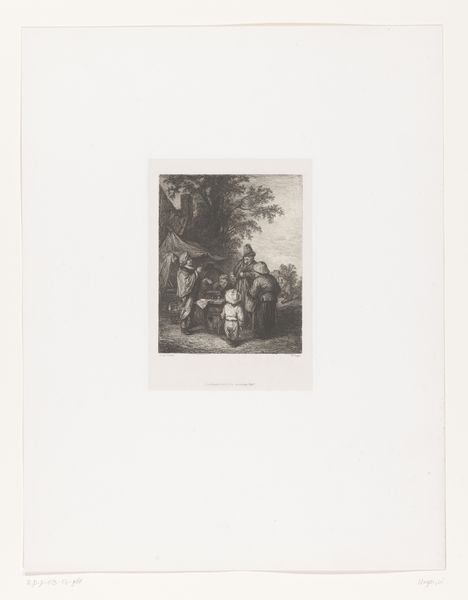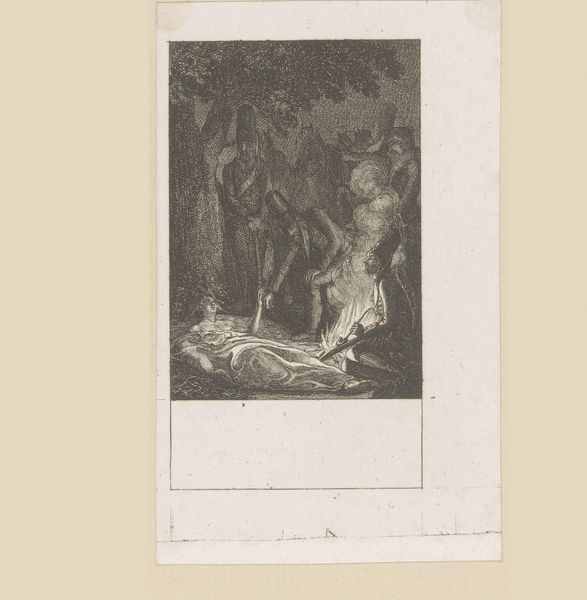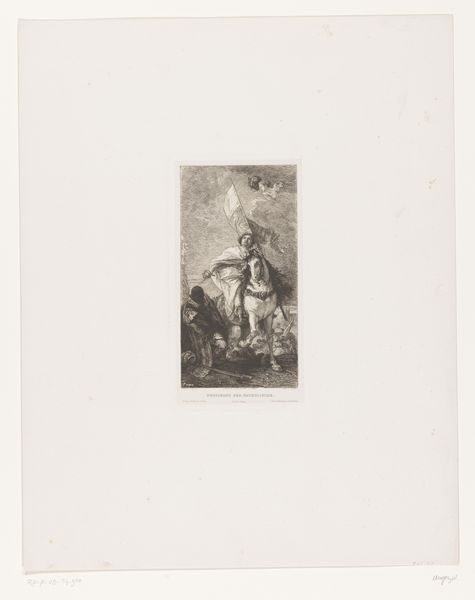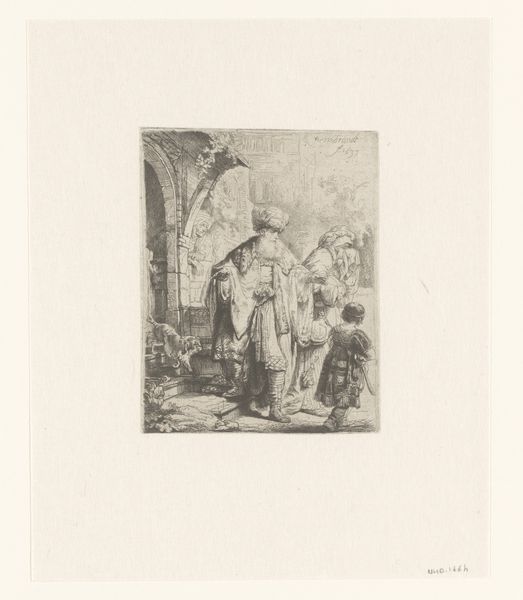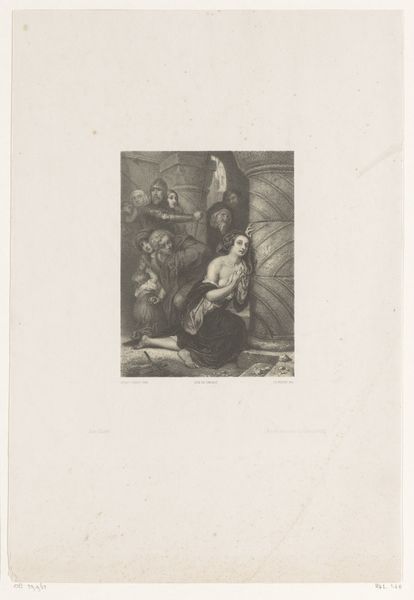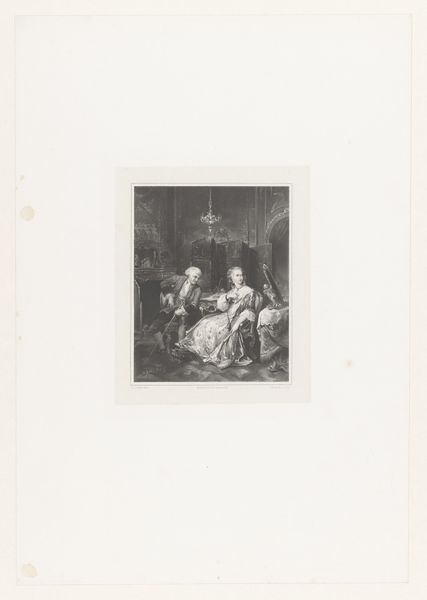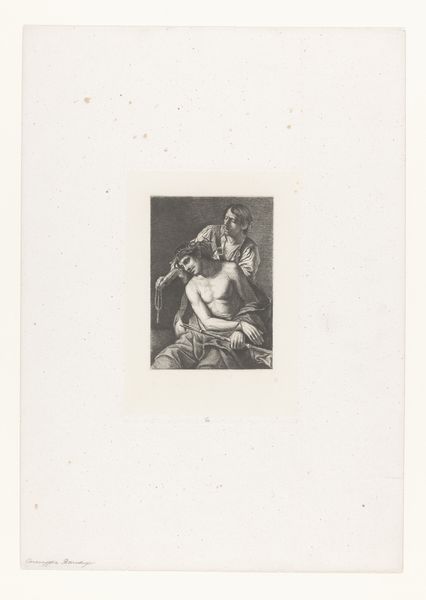
Dimensions: height 257 mm, width 245 mm
Copyright: Rijks Museum: Open Domain
Editor: This is "The Denial of Peter" by Nikolay Semyonovich Mosolov. It’s an etching, so it's print on paper, and it appears to have been made sometime between 1857 and 1914. The chiaroscuro is really striking! What do you see in this print? Curator: As a materialist, I'm immediately drawn to the etching process itself. Think about the labor involved: the artist carefully incising lines into a metal plate, using acid to further erode those lines, and then the repetitive act of inking and printing. Each print becomes an indexical trace of that labor. Editor: So, you're saying it's not just about the religious subject matter? Curator: Not just. The subject, of course, speaks to themes of faith, doubt, and societal pressure. But consider the paper itself: Where did it come from? Who produced it? The act of reproducing this image democratizes it, allowing it to reach a wider audience, a departure from unique, privileged paintings. The materiality allows the many, the story itself is then re-consumed in a different light. Editor: That’s a great point! So, the availability of the print transforms the narrative’s accessibility, creating this kind of democratized interpretation of the biblical passage? Curator: Precisely! Consider the socio-economic context in which these prints were circulated. Were they commissioned? How were they priced? These material considerations open up new avenues for understanding the artwork’s function and reception within its time. The print participates within the network of social relations that produced and consumed it. Editor: It's interesting to consider beyond the aesthetic representation! This way of thinking really broadens my view on how we understand a work. Curator: Indeed, it compels us to see beyond the surface image and delve into the very fabric of its making.
Comments
No comments
Be the first to comment and join the conversation on the ultimate creative platform.




